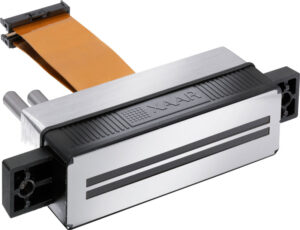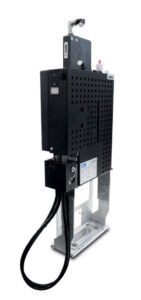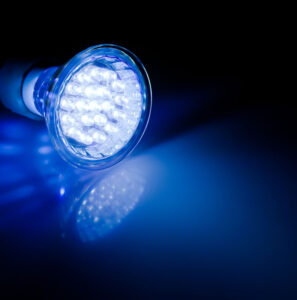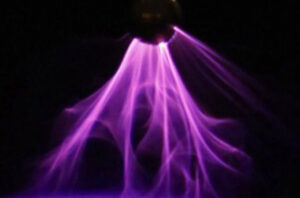by Craig T. Reid, president, CTR Resources, LLC
Whether sourcing an off-the-shelf inkjet printer or developing a custom solution, the selection and combination of the system components is a critical factor in achieving the performance expected to ensure productivity and return on investment. While this is true for all print segments, it is particularly vital for direct-to-shape/direct-to-object (DTS/DTO) plastics applications and with more variance depending on the complexity of the unique production requirements.
Inkjet components typically fall into one of the following categories: Chemistry, printheads, drive electronics, ink delivery systems, pretreatment, curing/drying, substrate handling (transport), software and finishing. Additionally, post-sale service and support deserve consideration. Of course, the ability to put together all these components into a robust performing system often proves challenging, as the sum of the parts does not always guarantee success. But, a poor selection of even just one of the components can mean that the whole system is held back. And sometimes, the combination of certain components requires modifications when the system gets stressed under real world production conditions.
Chemistry
It is worth exploring chemistry first because, in the end, the finished product is the chemistry (inks, coatings, etc.) applied to the plastic that is the decoration itself. The rest of the components are the mechanisms to apply the chemistry. The selection of which ink type to use may depend greatly on the specification requirements of the application. Will the plastic be a safe enough barrier between the ink and the contents in a plastic container application? Will the ink come in direct contact with food or human lips? What are the post-print requirements the chemistry must stand up to – such as abrasion resistance, temperature extremes, chemical resistance, etc.? Will the ink need a primer or pretreatment for proper adhesion, wetting or color for any given substrate? How many types of plastic need to be decorated?
Energy cure type inks and coatings (UV, UV LED, some EB) are the most common choice today for inkjet systems intended for plastics, with newer emulsion-based aqueous pigmented or hybrid inks being developed for applications deemed unsafe for UV. Solvent, while used extensively for conventional printing methods for flexible packaging substrates, has proven more of a challenge in inkjet for plastics. Most important is that the selection of chemistry directly impacts the choices for the other components, so it is encouraged to start with the performance of the chemistry first before designing a new system or choosing an off-the-shelf solution. Those performance characteristics should include at least the following: adhesion, color, physical resistance needed (abrasion, chemical, vapor, etc.), cure/dry and stability. Some applications may require safety confirmation, such as migration, dermal or even recycling.
Printheads

Once the chemistry type has been defined, often the next step is to select the best printhead technology, keeping in mind any specific shape requirements. Most of the commercially available inkjet printheads were developed primarily for commercial print applications, not particularly ideal for DTS. Nearly all are best at printing onto paper or other perfectly flat substrates in a very controlled system with printheads mounted to jet either straight down or sometimes at a slight angle, working best when less than one millimeter away. The trend is to cram as many nozzles together in ever increasing widths, very small drops, with lower and lower viscosity, high frequency and much higher native resolutions. All this new technology is helping drive inkjet adoption into nearly all print segments.
DTS/DTO inkjet applications, such as plastics and packaging containers, often require more specific performance metrics for a printhead vs. typical commercial printing or display graphics and signage. There are several elements to consider, such as jetting distance – does the DTS application require greater than one millimeter distance? With most rigid or semi-rigid plastics the substrate is not perfectly flat, or the shape cannot always be exactly perfect or moved in front of the printhead so precisely in real world production speeds. Thus, jetting distance accuracy is important.
In printheads, the design matters. The physical size, shape (form factor) and nozzle configuration often dictate how they can be mounted to an object. Can the printhead jet be mounted completely sideways (what is referred to as skyscraper mode), which requires sophisticated meniscus control? The object or shape may be best imaged from the side, vertically or as a semicircle around a cylindrical shape, but relatively few printheads can be mounted in these ways or have a form factor (size/shape) that limits the fit.
Chemical compatibility also must be considered. Does the printhead work with the components in the chemistry that is best for the application? Do they need to be temperature controlled, such as is highly suggested for UV cure type? Do they support flow through or ink recirculation, which may be either required or highly suggested for some fluids, especially high lay down pigment loads and white? Often, some of the tried and true industrial printheads are still the best choice for some DTS/DTO applications, as they combine the best form factor and jetting condition flexibility for industrial decoration.
Drive electronics and ink delivery systems

These are often the least thought about, but most critical components, in any system. When they perform properly they are easy to forget, and, somehow – even when the data cannot drive the head correctly or feed the ink at full load speeds or the image quality is off – they are often the last things to be blamed. Yet it is surprising how often the image quality defects are traced back eventually to plumbing, pressures, wave forms and imaging patterning – all of which are part of the drive electronics and ink delivery system’s responsibility. Assuming, of course, that the other components are compatible. For the electronics, things like data path capacity, screening and sensor/encoder interfaces must happen in real time for high production systems. And, those high-speed production systems often jet a lot of ink at one time, then might be idle, but must retain a state of readiness at a moment’s notice. So, while the ink and the printhead typically get top billing, in the background the electronics and ink delivery systems are quietly performing their critical role in getting the fluids to the right place at the right time. Simple things like clogged filters, inconsistent voltage, poor vacuum/pressure control and bad data should never be what brings large investment in an industrial inkjet system to a halt.
Curing/drying
For whatever chemistry type used, the fluids will need to go from a liquid state to a dry or solid state for the final decorated product. Decorating plastics has always required more consideration for drying or curing than substrates such as paper, metals and glass.

While mercury lamps are common for metal and glass, for UV cure most plastics clearly have different dimensional stability characteristics. Nearly all the newer DTS/DTO UV inkjet systems designed for plastics use LED lamps, most in the 395 nm range. Depending on the configuration of the system, some are using smaller pinning lamps in between colors and/or stations, with higher energy lamps for final full cure. There are many good quality UV LED lamp manufacturers and models on the market.
Contrary to what many people have assumed, the physical temperature (not the color temperature) of liquid cooled lamps at the point of curing is typically the same as air cooled. Liquid cooled electronics enable higher power use. So, the choice will depend mainly on the power level needed to match the production speed.
Some of the brands are now offering the ability to have very thin and small lamps tied via umbilical cord to their controllers and power supply. This configuration allows the lamps to be placed in a greater variety of positions, which can be particularly useful for inline cylindrical imaging where, for example, the white must be pinned, then colors jetted on top, or vice versa.
Positioning of the lamps can play a critical part of the functionality of the system. Cure speed, distance, dwell time and other factors can influence adhesion, gloss and even the wetting characteristics of the chemistry.
Several years ago, a system launched with what turned out to be a questionable (unfortunate) lamp choice and position in the printer pointing directly up in a cylindrical turret style imaging module. While customers that printed opaque tumblers had few problems, those printing translucent or clear experienced difficulty keeping the nozzles unclogged and began to have to replace printheads far too often.
After initially suspecting bad ink, the real culprit was that the lamp shining through translucent shapes was curing ink inside the nozzles. Shifting the direction of the lamp, along with more focused columniation of the energy, resolved the problem, along with using a black nose cone that protruded into the empty space of the tumbler to block the light.
Other ink types use air and/or IR to drive off the water or solvent in the ink or coating. While not as instant dry as energy cure, and depending on the chemistry, coatings that are “baked on” can provide a durable protection for the decoration.
The design of the system tends to get larger with air dry vs. energy cure and can require additional substrate handling challenges until the chemistry is finally dry.
Substrate pretreatment

The ideal DTS/DTO inkjet solution would have a single ink/coating set that performed perfectly on any and all substrates. Despite some manufacturers’ marketing claims, such magic does not exist. Even breaking down the category of plastics into subsegments, it has proven impossible to get one formulation to perform perfectly, let alone acceptably in every application and substrate. Sometimes even combining just two or three categories, the results still vary depending on the plastics manufacturer or batch.
In the conventional print method world, additives and modifications are often made on-site, and still don’t always work. So, using a chemical primer, a pretreatment process or both is required.
Pretreatment requirement is often more so for inkjet formulations, as it is simply not practical to change out the chemistry for each different plastic.
Chemical primers, including new jettable versions, can be an effective way to improve the ink performance on a wide variety of substrates. Inline corona treatment for flexible packaging materials has shown some improvement but not so much in rigid or semi-rigid plastics.
Flame treatment can provide a way to clean any oils left on the plastic from the manufacturing process and can often be effective in temporarily changing the surface energy to better work with the surface tension of the ink.
Although more expensive to implement, plasma does nearly all that flame can do, only in a much more controlled way. Flame plus a chemical etch can be effective with hard plastics, such as polycarbonate. Will pretreatment be needed? Only testing will confirm.
Substrate handling (transport)
This area typically has the greatest influence on the size, shape, and often the overall cost of the system. For DTS inkjet, it goes to reason that clearly one size does not fit all. If the object and location being decorated are relatively flat and the volumes are low, it may be possible to get by with a modified XYZ flatbed style design with multi-pass scanning printheads.
Commercially available flatbed inkjet printers come in a wide range of sizes and speeds, some with excellent Z-axis control to enable printing one side of an object at a time. Some vacuum belt hybrid-style systems also have good Z-axis control. Both types use pre-made templates to hold the object or a table full of objects in place for decoration. The speed and practicality of manual load and unload, along with only being able to print on relatively flat surfaces, are their limiting factors.
For higher productivity, single-pass, conveyor belt-type systems often are used for decorating plastic parts that have a single relatively flat surface. Plastic objects, such as screw caps for bottles, run down the conveyor and are digitally decorated and UV cured at rates up to 30,000 pieces per hour. More complex shapes often use a shuttle approach to hold the object in position while riding down the conveyor. Adding robotics for load and unload increases productivity but at a higher investment cost. Cylindrical and oblong irregular shapes are typically characterized as turret and/or rotary cam mandrel substrate handling systems.
Commercially available systems range from one-off manual load designs aimed at promotional decoration, up to fully automated mass-production-speed models. For example, small plastic tubes and drink cups often use a relatively simple single point mandrel, whereby the shape is pushed onto a mandrel near the inside diameter size of the shape, held on with vacuum, then positioned under the printhead to be decorated, moving station-to-station through final cure, and then blown off or taken off automatically. Proven models can reach 400-piece-per-minute productivity with full color imaging around the entire shape.
Some current manufacturers have systems for irregularly shaped semi-rigid and rigid plastic shapes, such as oblong shampoo bottles, jars, beverage bottles and other packaging containers. These systems typically use a two-point substrate handling configuration consisting of robotic load and unload, a nose cone and base plate on a rotary cam, along with carousel style design to position the shape in front of or under individual printhead stations.
Software
In this case, software is referring to the workflow and color management needed for production and quality control. In short, how the system will interface with a company’s enterprise resource production system must be confirmed. Without the appropriate color management and method for quality assurance, it becomes too easy to produce the wrong job with varying color from batch to batch.
Mass production vs. discrete manufacturing
The cost and scale of any DTS/DTO inkjet decoration system is going to come down to three primary factors: complexity of the shape, production speed and level of automation. It is exciting to see so many high-speed inkjet production systems implemented in the past few years with ever increasing performance numbers often now surpassing the analog process they are replacing.
While gaining less notoriety, there also is a groundswell of customized discrete manufacturing now implementing inkjet as the preferred form of on-demand decoration. In some cases, just one decorated piece per minute, with each being a unique decoration, is all that is needed. Tied directly to good order-to-cash enterprise software, customization can go from a loss leading necessary part of production to an extremely profitable differentiated offering to gain and keep customers.
Off-the-shelf or custom integration
The general rule of thumb is if a commercially available inkjet system can perform everything needed with nothing more than some custom templates and programming, then that choice likely will be the lowest cost and quickest to implement. On the far extreme would be full development of a solution from scratch, which may be warranted depending on the specific application. If this is needed, it is best to break out the cost of the engineering, design and prototype phase from the cost of the systems themselves. The development is considered R&D from an accountability standpoint, leaving the equipment as capital equipment. Too often the development cost is lumped in with the first system, which skews the actual ROI and operational cost of ownership.
More common today is a hybrid approach whereby already proven combinations of components are found that are similar to the needed requirements but only need to be modified and matched up with another set of proven components to integrate a solution. This approach is typically lower risk than a total design from scratch and usually lower cost, as the time to integrate is much shorter – especially if only simple modifications are needed.
Sorting through the technology and options can be a confusing and time-consuming process that can be both accelerated and made less risky by engaging a fully independent external consultant to assist with the project. These experts can quickly provide realistic options and assist in stage gate-style project management, up to and including implementation of the solution into production.
Investment timing
Inkjet onto plastics has been a proven technology for more than three decades. For much of that time it was relegated to only coding and marking applications. In the past 10 years, with the technological advancements of all the components that make up a system, full color decoration is not only possible but most recently has crossed the threshold to make for an easy ROI decision.
 Craig Reid is president of CTR Resources, LLC, providing consulting and contracted services primarily for digital printing. A self-titled “Inkjet Evangelist,” he has more than three decades of global technical and business roles in the printing industry. His primary focus areas include direct-to-shape/direct-to-object inkjet printing for packaging and a wide variety of industrial applications, supporting clients, such as OEMs, integrators, end users looking to implement digital and system component manufacturers. For more information, visit www.ctrresources.com.
Craig Reid is president of CTR Resources, LLC, providing consulting and contracted services primarily for digital printing. A self-titled “Inkjet Evangelist,” he has more than three decades of global technical and business roles in the printing industry. His primary focus areas include direct-to-shape/direct-to-object inkjet printing for packaging and a wide variety of industrial applications, supporting clients, such as OEMs, integrators, end users looking to implement digital and system component manufacturers. For more information, visit www.ctrresources.com.


